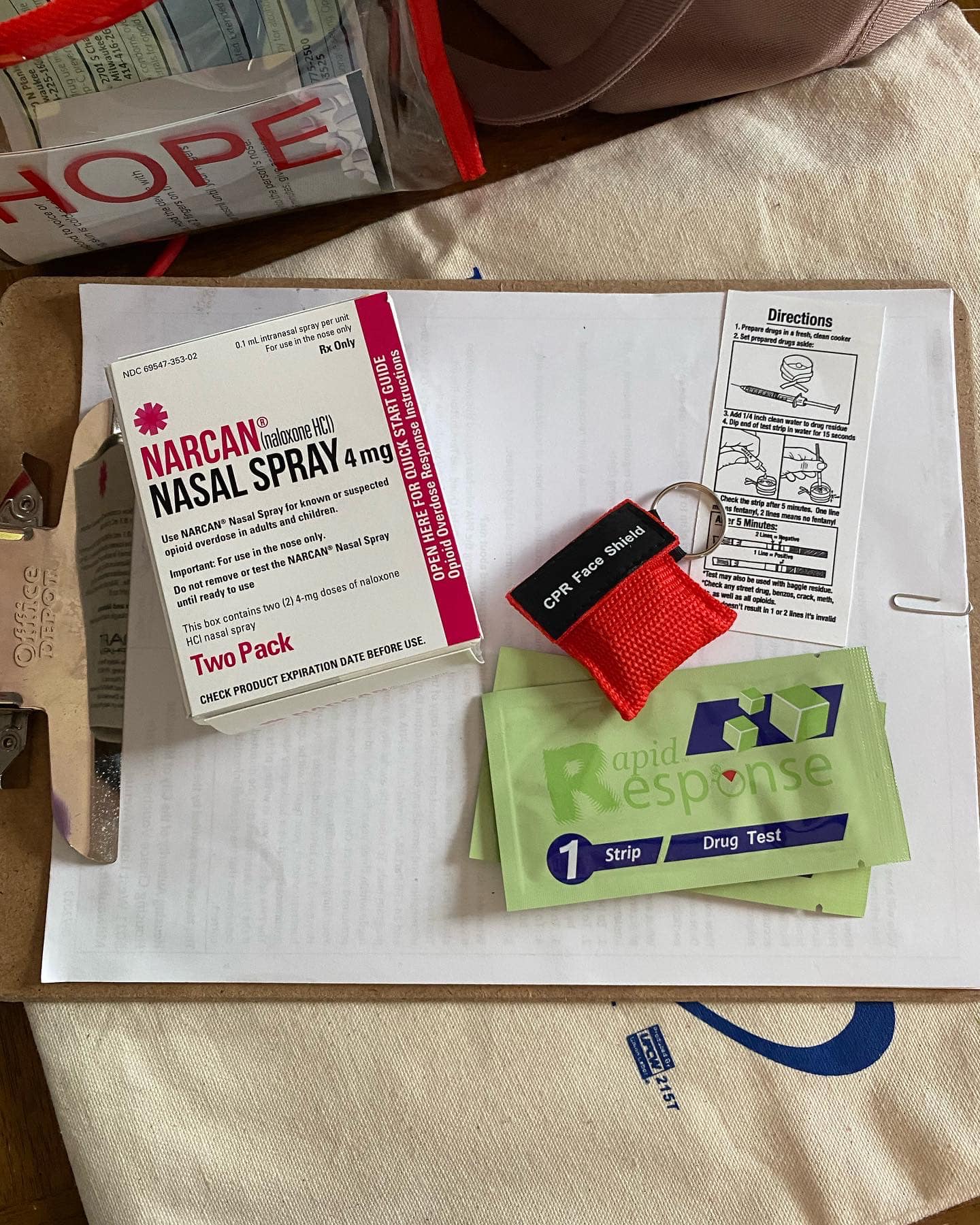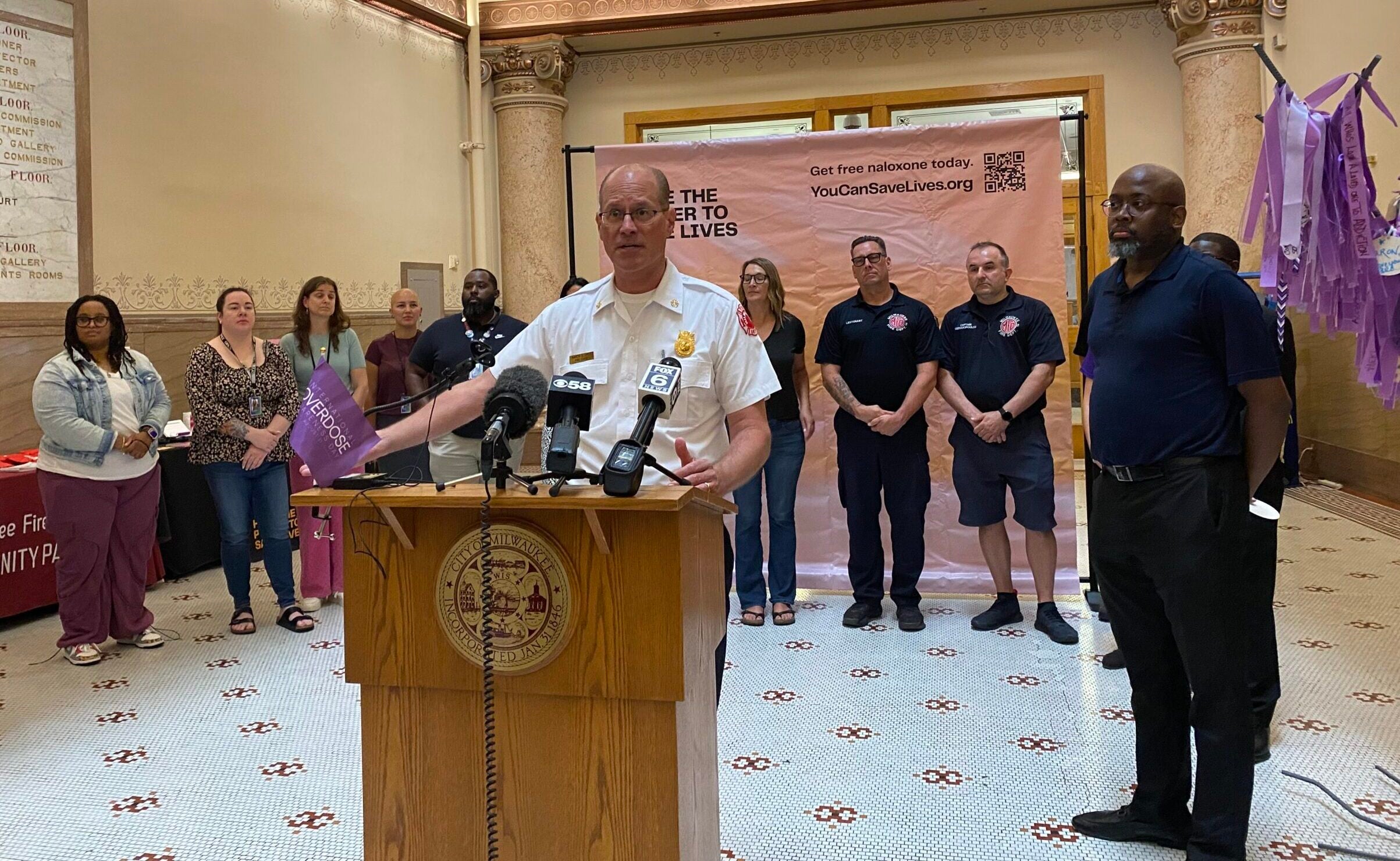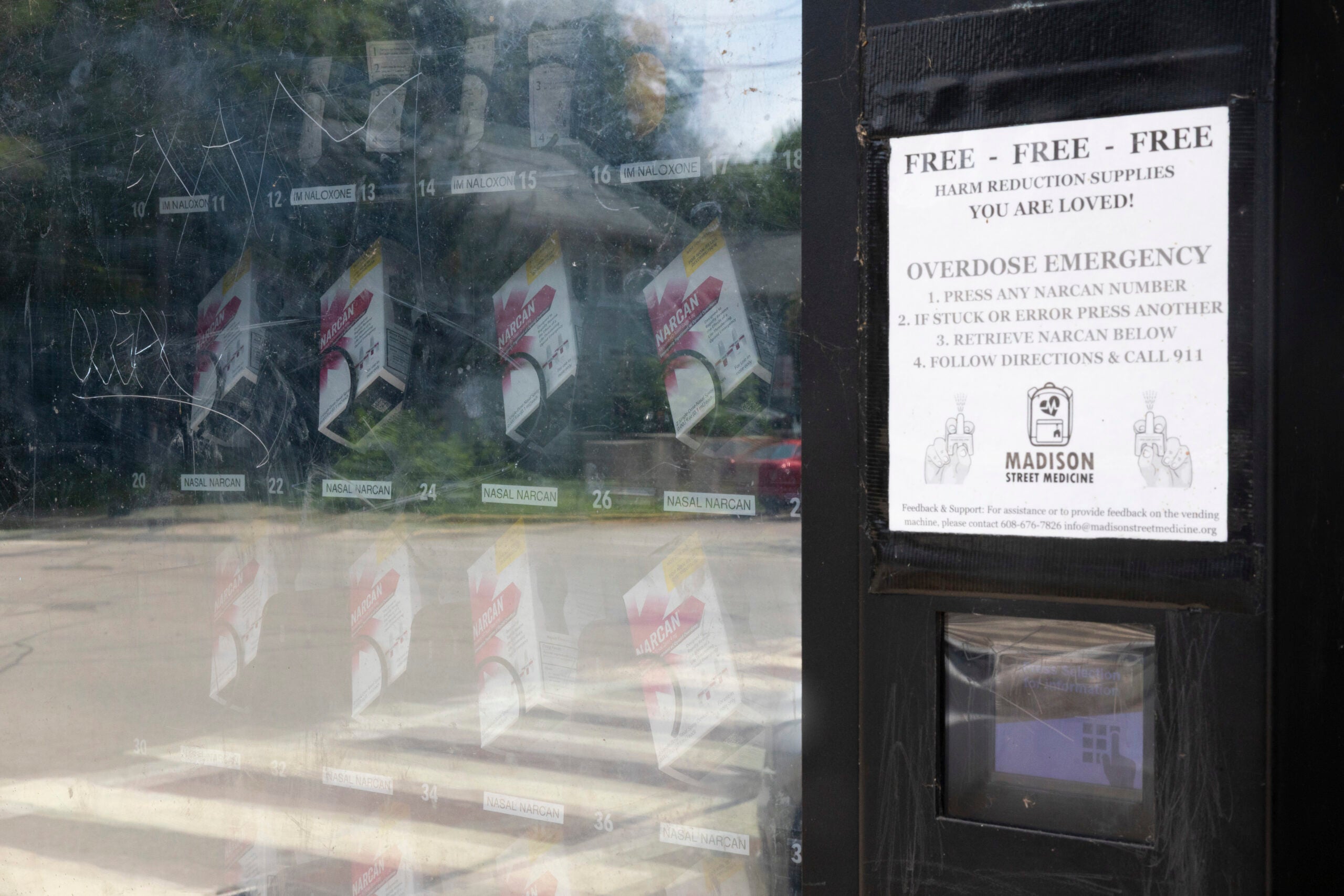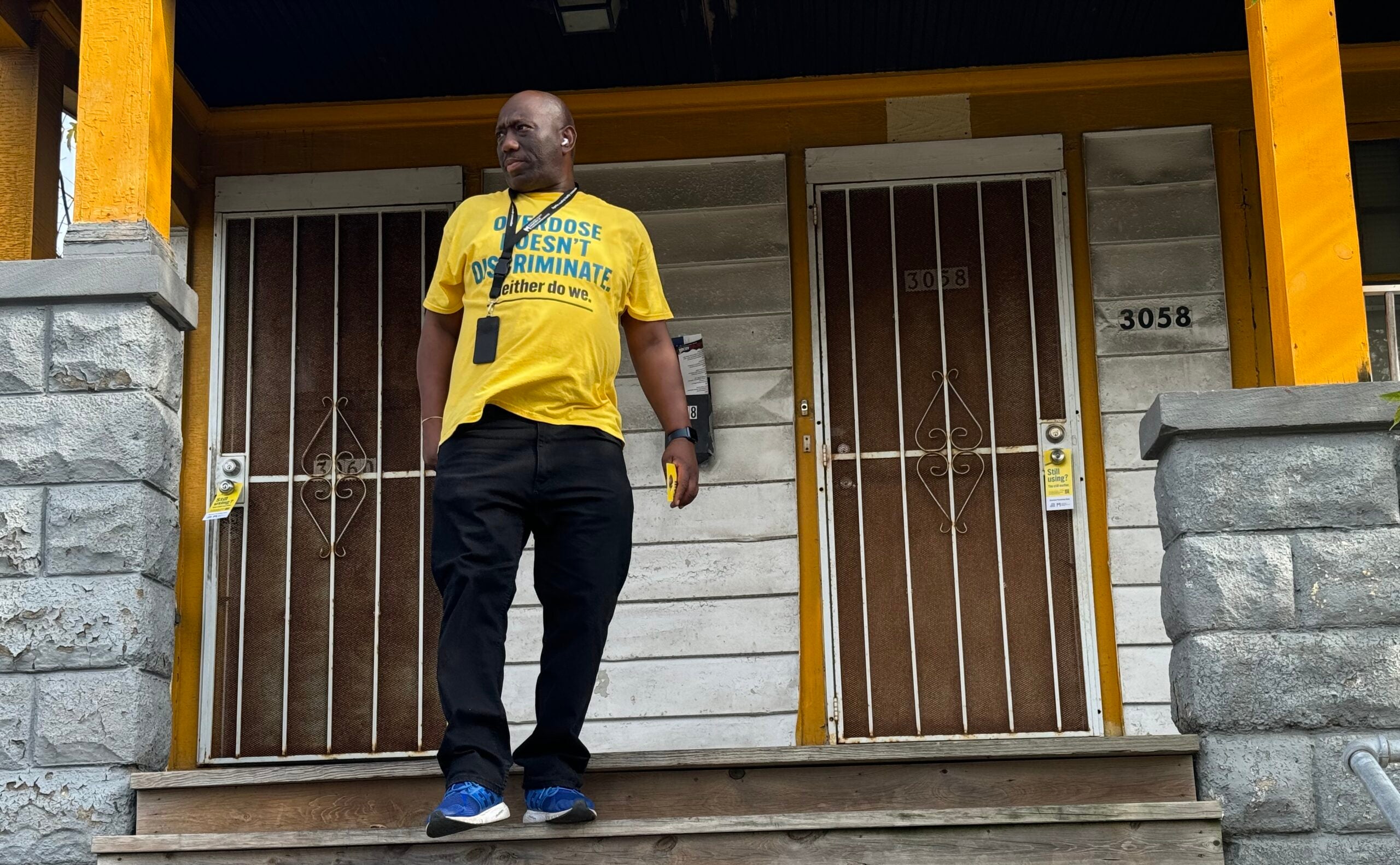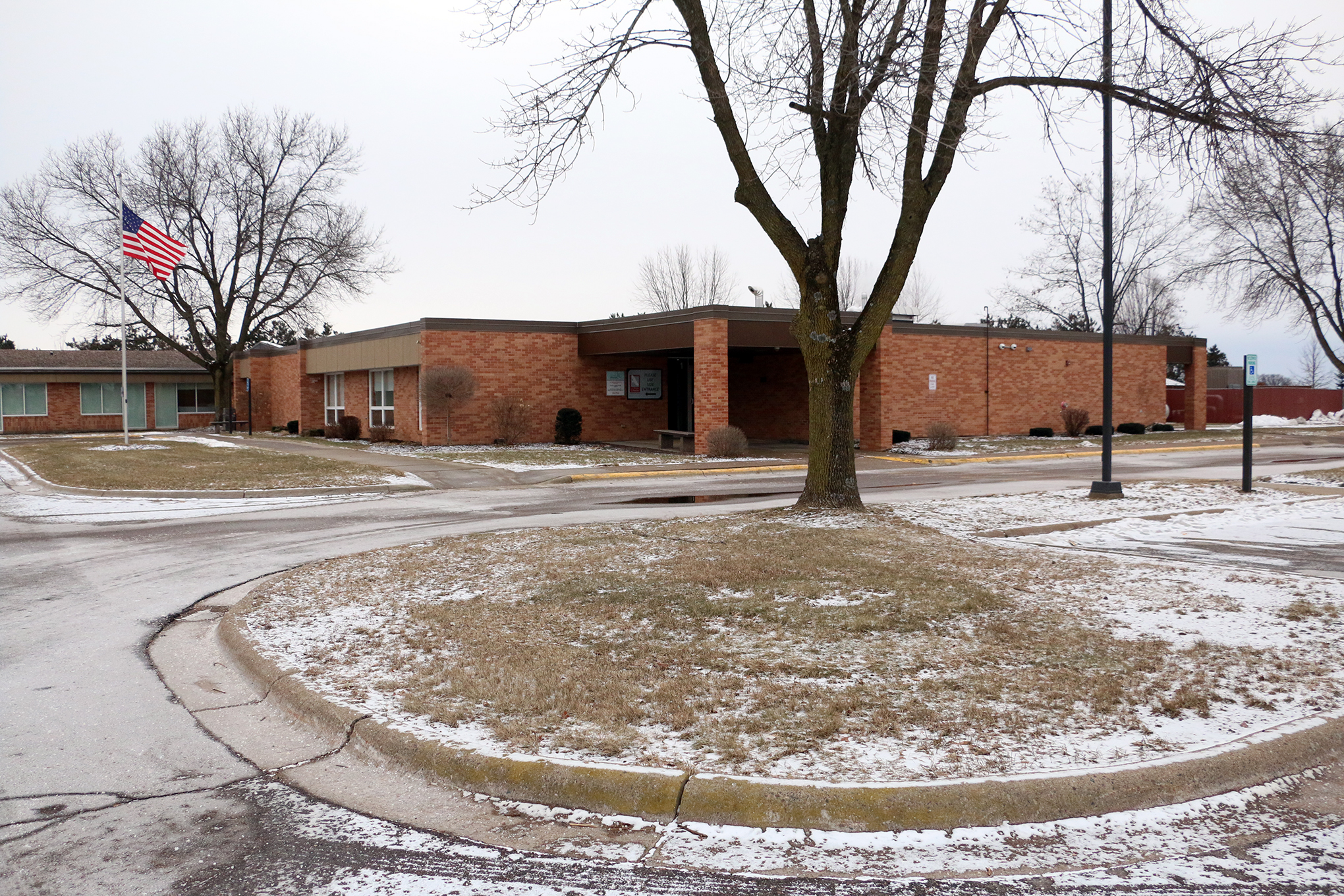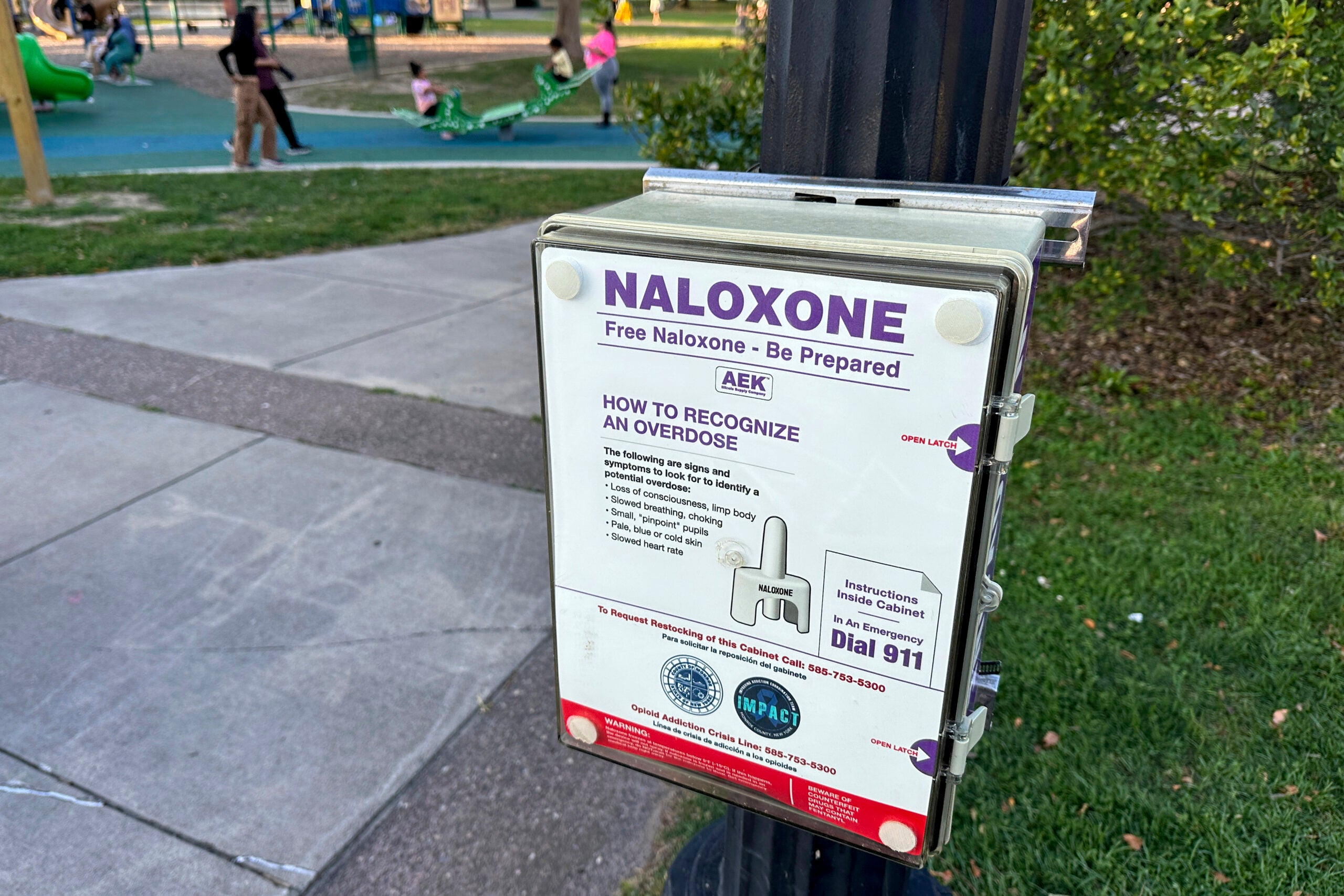With increased funding available this year, the state Department of Health Services has submitted their plan for spending $36 million from national settlements against opioid manufacturers, retailers and distributors.
A 2021 law requires that 70 percent of opioid settlement funding go directly to the counties and municipalities that joined the national lawsuits. DHS is required to submit their plan for spending the remaining 30 percent to the state Legislature’s Joint Finance Committee for approval.
On a call with reporters Wednesday, DHS Secretary Kirsten Johnson said the proposal for the next fiscal year, which was submitted on Monday, has two strategies.
News with a little more humanity
WPR’s “Wisconsin Today” newsletter keeps you connected to the state you love without feeling overwhelmed. No paywall. No agenda. No corporate filter.
“One is to really continue to invest in the hard work communities in Wisconsin are already doing,” she said. “Continue to invest in the projects, the ideas and programs that we’ve heard from many people across the state that work for them. And the second is to prevent opioid misuse by educating Wisconsinites, especially young people, about the risks.”
Funding for prevention efforts has been cut or greatly reduced by state lawmakers in plans from the last two years.
Johnson said DHS did take into consideration how the Joint Finance Committee prioritized funding in the past. But she said the agency is hopeful that the larger pool of funding available this year will mean lawmakers will approve the $5 million that has been proposed for these programs.
Attorney General Josh Kaul told reporters on Wednesday that support for prevention efforts was brought up repeatedly in conversations with community leaders and organizations working to combat substance abuse.
“Folks in the public health communities, they’re committed to fighting this epidemic as it stands,” Kaul said. “But they want to stop using Narcan and start getting in a position where instead of saving folks who have overdosed, we’re preventing people from developing substance use disorder in the first place.”
DHS plan would distribute overdose prevention, reversal aids in multiple ways
The proposal maintains funding for overdose reversal drug Narcan and fentanyl test strips, while also adding $1 million dollars to support the state’s Public Health Vending Machine program. The vending machines are a way to distribute Narcan and fentanyl test strips to individuals who may be concerned about the stigma around substance abuse.
Johnson said the agency also wanted to expand the state’s fentanyl test strip program to include tests for emerging drugs like xylazine, a non-opioid veterinary tranquilizer.
“We wanted to make sure we were being proactive and thinking broadly, that if there are additional substances that enter into the drug supply across the country, that we are able to invest in test strips for those drugs,” she said.
The plan allocates $1.5 million to sustain the state’s current EMS Leave Behind program, which provides emergency medical responders with overdose prevention tools they can leave with a patient, their family or a friend. Last year, settlement funds supported these services at 21 EMS agencies across the state.
The plan also maintains $2.5 million to cover room and board costs at residential treatment centers for Medicaid members. The federal Medicaid program only provides coverage for treatment costs of residential substance use treatment, leaving patients to cover room and board expenses themselves or with help from a county or charitable organization. The DHS proposal said the lack of consistent funding has caused many of the state’s limited treatment facilities to be reluctant to take Medicaid members.
Johnson said the state already has a limited amount of space at treatment centers.
“We need more places where people can recover safely and in their own communities, where they’re connected to resources and their support system,” she said. “That is also why we’ve included capital dollars into this year’s request, because those capital dollars are really intended to increase the number of recovery places.”
State officials say overdose trends illustrate ‘dangerous time’ for anyone using illegal substances
Kaul said fentanyl continues to be the main driver behind the state’s alarming overdose trends.
More than 1,800 Wisconsinites died of a drug overdose in 2022, with 80 percent of those deaths involving opioids. The DHS report shows nearly all of those opioid deaths were linked to synthetic opioids like fentanyl.
In recent years, a rising number of these overdoses involve more than one substance, most commonly opioids and stimulants like cocaine or methamphetamine. From 2021 to 2022, the number of fatal overdoses from opioids alone declined by 13 percent, according to DHS. But the number of deaths from a combination of opioids and stimulants grew by 20 percent.
“Right now, the supply of drugs that are out there is really, really toxic between fentanyl and xylazine,” Kaul said. “It is critical for anybody who’s struggling with substance use disorder to try to get the help that they need right now, because it’s a very dangerous time in the controlled substances world.”
DHS’ proposal allocates $6 million to Tribal Nations in the state to continue initiatives started in 2023 using opioid settlement funds. It also invests new funding to support an additional 75 peer support workers across the state’s opioid treatment programs.
The proposal would add new support services for the families of people struggling with substance use disorder, an initiative that was previously cut by the Joint Finance Committee.
Johnson said thousands of Wisconsinites have lost loved ones to opioid overdoses in recent years and many more families are currently watching someone struggle with addiction.
“It is heartbreaking when people overdose, but it is also incredibly challenging to see a loved one struggling with substance use disorder,” Johnson said. “This is really intentional around both prevention and supporting people through the recovery process and their families.”
DHS’ proposal allocates $5 million to create pilot family resource centers that the agency says can help fill gaps in available services and improve children’s well-being.
The plan also continues funding grants for law enforcement agencies and allocates $1.5 million to improve data collection around substance misuse in the state.
Wisconsin Public Radio, © Copyright 2025, Board of Regents of the University of Wisconsin System and Wisconsin Educational Communications Board.

